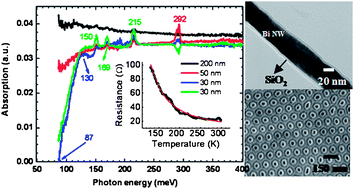A novel approach for fabrication of bismuth-silicon dioxide core-shell structures by atomic layer deposition
Abstract
Bismuth (Bi)

* Corresponding authors
a
Max Planck Institute of Microstructure Physics, Weinberg 2, Halle, Germany
E-mail:
jmlee@mpi-halle.de
Fax: +49-345-5511-223
Tel: +49-345-5582-546
b
Institute of Applied Physics, University of Hamburg, Jungiusstrasse 11, Hamburg, Germany
E-mail:
sfarhang@physik.uni-hamburg.de
c Ertl Center for Electrochemistry and Catalysis, Gwangju Institute of Science and Technology (GIST), Gwangju, South Korea
Bismuth (Bi)

 Please wait while we load your content...
Something went wrong. Try again?
Please wait while we load your content...
Something went wrong. Try again?
J. Lee, S. Farhangfar, R. Yang, R. Scholz, M. Alexe, U. Gösele, J. Lee and K. Nielsch, J. Mater. Chem., 2009, 19, 7050 DOI: 10.1039/B908615C
To request permission to reproduce material from this article, please go to the Copyright Clearance Center request page.
If you are an author contributing to an RSC publication, you do not need to request permission provided correct acknowledgement is given.
If you are the author of this article, you do not need to request permission to reproduce figures and diagrams provided correct acknowledgement is given. If you want to reproduce the whole article in a third-party publication (excluding your thesis/dissertation for which permission is not required) please go to the Copyright Clearance Center request page.
Read more about how to correctly acknowledge RSC content.
 Fetching data from CrossRef.
Fetching data from CrossRef.
This may take some time to load.
Loading related content
